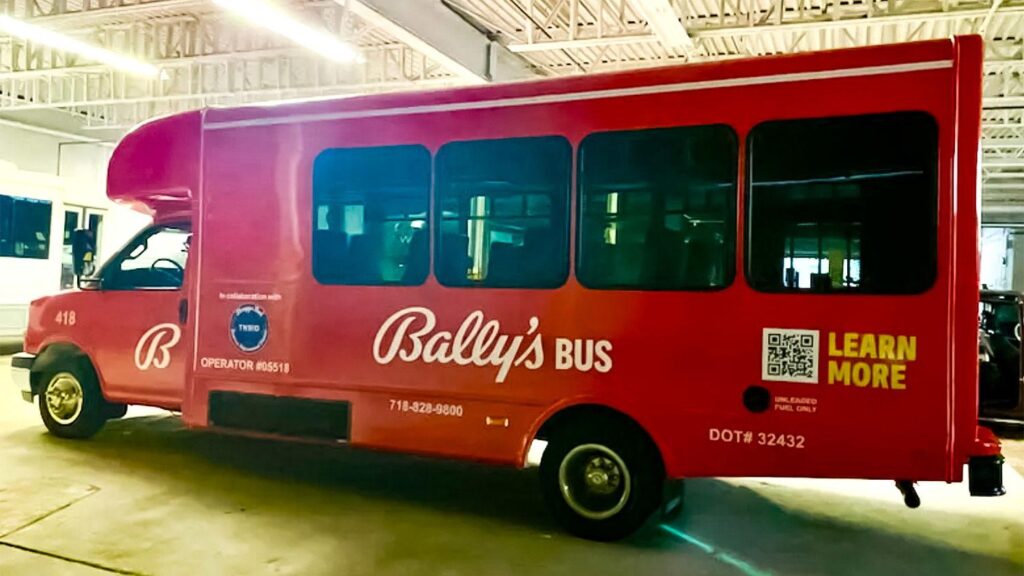Leveraging Casino Revenues to Revitalize New York City’s Transit Network
Identifying the Beneficiaries of Casino-Funded Transit Enhancements
As New York State allocates a share of its burgeoning casino revenues toward public transportation, the advantages extend well beyond mere infrastructure improvements. Daily commuters benefit from more reliable, efficient, and expanded transit options, which translate into smoother journeys and reduced travel times. Simultaneously, transit employees gain from increased job stability and enhanced benefits, thanks to more consistent operational funding that mitigates the risks of budgetary shortfalls.
Moreover, the economic uplift radiates through local communities. Businesses situated near transit hubs experience heightened patronage due to increased foot traffic, while the state government enjoys a diversified revenue stream that supports transit without resorting to tax hikes. The following table summarizes the primary recipients of these casino-generated funds:
| Stakeholder | Key Advantage |
|---|---|
| Commuters | Enhanced transit reliability and expanded routes |
| Transit Employees | Greater employment security and improved benefits |
| Local Enterprises | Boosted customer flow near transit stations |
| State Authorities | Additional transit funding without increasing taxes |
- Neighborhood Revitalization: Enhanced transit often acts as a catalyst for urban renewal and economic development.
- Environmental Benefits: Improved public transportation reduces car dependency, contributing to lower greenhouse gas emissions.
- Financial Resilience: Casino revenues offer a relatively stable funding source, less susceptible to economic downturns compared to traditional tax revenues.
Casino Revenue Driving Subway Modernization and Safety Improvements
New York City’s subway system, long plagued by outdated infrastructure and chronic funding gaps, is now receiving unprecedented financial support through casino-related income. These funds are instrumental in implementing vital upgrades, including state-of-the-art signaling technologies that increase train frequency and station refurbishments that enhance safety and accessibility for millions of riders. By channeling a portion of casino taxes and licensing fees into transit, New York is pioneering a hybrid public-private funding model that could serve as a blueprint for sustainable urban infrastructure financing.
Key areas of impact include:
- Cutting-Edge Signaling: Deployment of communication-based train control (CBTC) systems is projected to reduce delays and increase line capacity by approximately 20%, particularly on heavily trafficked routes.
- Station Upgrades: Improvements such as brighter lighting, modernized elevators, and clearer signage are significantly enhancing commuter comfort and accessibility.
- Safety Enhancements: Investments in fire prevention systems and emergency response infrastructure are bolstering passenger security across the network.
| Project | Funding Source | Expected Completion |
|---|---|---|
| CBTC Implementation (Line 7) | Casino Tax Allocations | 2025 |
| Times Square Station Renovation | Casino Licensing Revenues | 2024 |
| Emergency Systems Upgrade | Casino Partnership Funds | 2026 |
Obstacles in Channeling Casino Earnings Toward Transit Development
Despite the promising influx of casino-generated funds, directing these revenues into New York’s transit system is fraught with complexities. Multiple layers of government bureaucracy and competing budgetary demands often hinder the efficient allocation of these resources. Education, healthcare, and other essential public services frequently compete for the same pool of casino revenues, limiting the amount available for transit projects. Additionally, the inherently fluctuating nature of casino profits-affected by economic cycles and market trends-poses challenges for long-term transit planning and funding stability.
Governance issues further complicate matters. Various agencies and commissions wield differing levels of control over casino funds, leading to fragmented decision-making and delays in disbursement. The following points highlight the primary challenges:
- Budgetary Competition: Multiple public sectors vie for casino revenue shares, diluting transit allocations.
- Revenue Instability: Casino earnings can vary significantly, undermining consistent funding.
- Disjointed Oversight: Overlapping authorities create inefficiencies and slow fund distribution.
- Public Concerns: Social issues related to gambling influence political will and funding priorities.
| Challenge | Effect on Transit Funding |
|---|---|
| Revenue Fluctuations | Unpredictable funding streams |
| Legislative Priorities | Reduced allocations due to competing needs |
| Administrative Complexity | Delays in fund release |
| Public Perception | Pressure to limit or redirect funds |
Strategic Policy Measures to Optimize Casino Revenue for Transit Enhancement
To fully capitalize on casino-generated income, New York must implement a comprehensive and transparent policy framework. Establishing a dedicated transit revenue trust fund would ensure a fixed portion of casino profits is earmarked exclusively for transit infrastructure, service expansion, and safety improvements. Encouraging collaboration between transit agencies and casino operators can foster innovative financing mechanisms, such as joint marketing campaigns and fare incentives, which promote public transit use among casino visitors and residents alike.
Equity considerations should also be central to policy design, guaranteeing that neighborhoods near casinos receive improved transit connectivity and services. Targeted fare subsidies could further incentivize ridership, helping to alleviate traffic congestion and reduce environmental impacts. The following policy recommendations outline actionable steps to maximize the benefits of casino revenues for New York’s transit system:
- Create a Casino Transit Revenue Trust: Secure consistent, dedicated funding streams for transit projects.
- Focus on Capital Improvements: Prioritize replacing outdated infrastructure and expanding system capacity.
- Promote Public-Private Partnerships: Leverage casino-transit collaborations for innovative funding and service models.
- Implement Regional Equity Initiatives: Ensure underserved areas near casinos gain improved transit access.
- Enhance Transparency and Accountability: Regularly publish detailed reports on revenue allocation and transit outcomes.
| Policy Initiative | Anticipated Benefit |
|---|---|
| Dedicated Transit Revenue Fund | Reliable financing for long-term infrastructure projects |
| Capital Investment Prioritization | Stronger, more resilient transit infrastructure |
| Public-Private Collaboration | Creative funding solutions and increased ridership |
| Fare Subsidies and Equity Programs | Greater accessibility and reduced transit disparities |
| Transparency Measures | Improved public trust and oversight |
Conclusion: The Future of New York Transit and Casino Revenue Synergy
As New York City explores the untapped potential of casino revenues to shore up its transit system, the coming years will be critical in determining whether this innovative funding source can effectively address the city’s transportation challenges. Stakeholders-from daily riders to policymakers-are keenly observing whether this financial strategy can provide the stability and resources necessary to modernize and expand one of the world’s busiest transit networks. If successful, New York’s approach could serve as a model for other metropolitan areas seeking alternative funding avenues for public transportation.













